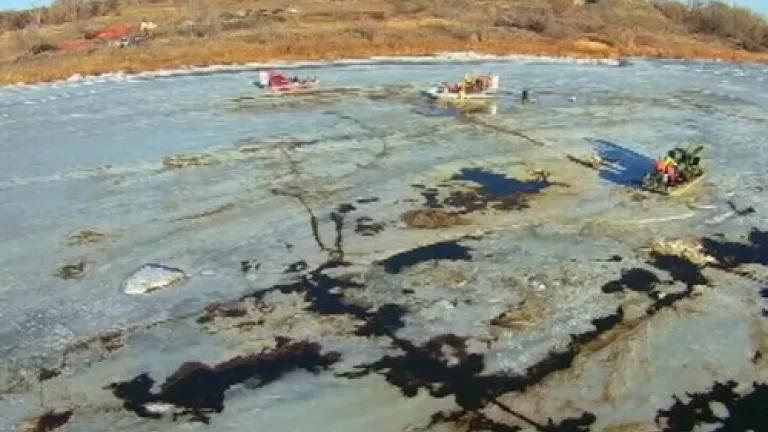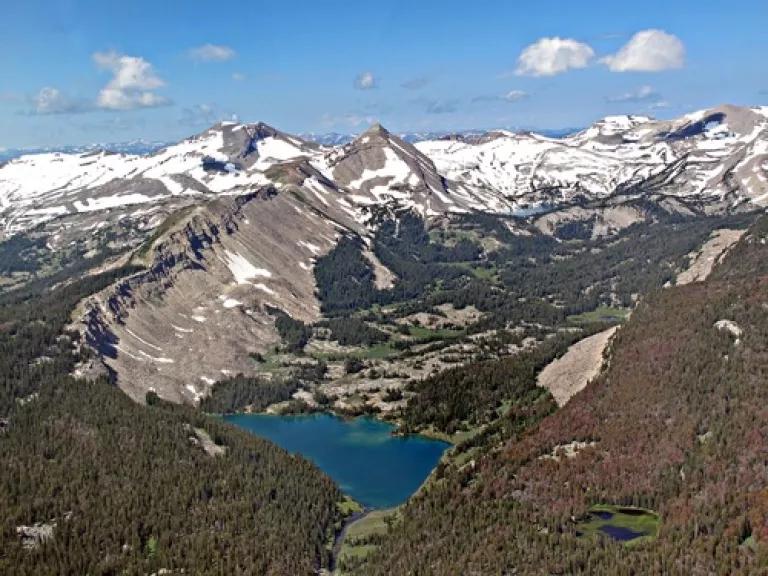Community Empowerment Project Website Launched; Time to Protect Montana Against the Dangers of Fracking

(Clean up crews work to recover oil out of the Yellowstone River near Glendive, MT after a 12-inch oil pipeline owned by Bridger Pipeline Co. spilled about 50,000 gallons of crude in January. Photo credit: Matthew Brown/AP)
The last few months of oil and gas headlines read like a horrible nightmare.
Oil train derailments in Illinois, West Virginia, North Dakota, and Canada forced resident evacuations and caused extensive environmental contamination.
Oil spills in North Dakota, Canada, California, and here in Montana.
Well blowouts in Texas and a drilling mud spill in Arkansas.
Fracking chemicals were detected in Pennsylvania drinking water, and a new University of Maryland study found that emissions from gas wells can be found hundreds of miles from the project site--even in states that forbid or strictly control fracking.
Scientists now link deep underground injection of wastewater from oil and gas operations to earthquakes, and U.S. Geological Survey (USGS) released a report that, for the first time, accounts for these human-caused earthquakes.
Multiple fracking wastewater spills have been reported in North Dakota, the first of which was the largest spill of its kind in the state since the current energy boom began. The full environmental impact of the 3-million gallon spill, which contaminated two creeks, might not be clear for months or even years.
We've discovered that fracking companies have WAY too much influence over federal agencies that are supposed to protect us. And even when federal agencies do their best to put good laws in place, state agencies, like those in California, aren't always doing their part-- allowing fracking companies to inject their dirty, toxic wastewater into protected aquifers holding water pure enough to drink. That's reckless behavior from a state suffering from severe drought and water shortages that imperil California's multi-billion dollar agricultural industry.
The oil and gas industry that is already exempt from key provisions of seven - that's right, seven - major federal environmental laws, allowing them to do business in a way that would otherwise be illegal. Executives act as though the industry doesn't have to follow the rules, and, more and more, our federal and state governments seem to agree. In California for example, inspections by water officials have found numerous oil-industry wastewater pits operating without permits across Central California where oil producers have been dumping chemical-laden wastewater into as many as 300 unlined, shallow troughs.
State governments like Texas are succeeding at making it more difficult for individuals to voice their concerns and for cities and towns to control what type of development happens in their backyards.
And the Obama administration has decided to green light drilling off the Alaskan coast, despite an overwhelming amount of evidence that it's a horrible idea.
Enough is enough.
Fortunately, some states and communities across the country, in the name of public health and the wellbeing of their citizens, are starting to push back against the oil and gas industry. In December of last year, for example, the State of New York announced it was banning fracking in the state. And, just this month, Maryland banned fracking, too.

(Photo of the Greater Yellowstone Ecosystem courtesy of Eco Flight)
Here in Montana, we need to determine the boundaries we want to set and push back before our state is the victim of the next oil and gas disaster.
And that's why NRDC and Pale Blue Dot Media have launched the Community Empowerment Project Montana (CEPMT). The project's goal is to help Montanans safeguard what is most important to us. Our communities and our citizens deserve clean air, healthy water, and protection of the beautiful landscapes we all know and love.
We want to raise awareness around these 3 issues:
1. The risks of oil and gas development to Montana communities in terms of water, air, land, social, health, and economic threats.
2. How communities can get involved with the federal and state processes for leasing and permitting.
3. The potential for development of clean, renewable energy sources in the state.
As part of the project, we recently hosted screenings of the fracking documentary "Backyard" in various communities around Montana, and we've also launched a great website that is packed full of information about oil and gas development in Montana. We want Montanans to be informed about these important issues, which is why we created the website. We update it almost daily with media stories and new information. Please check it out - and also join our Facebook page.
As the nightmare headlines over the past few months have shown us, we can't just sit back and let this continue. It is time to get informed and speak up.
Please visit our website, like our Facebook page, and email Governor Bullock and tell him to protect Montana from reckless oil and gas development.
